How To Propagate Snake Plants: 3 Successful Ways
Snake Plants are one of those houseplants I’ll never stop collecting. They’re bold, spiky, and practically indestructible—which makes them even more lovable. The fun part? You don’t have to buy more if you want a bigger collection. Today, I’ll walk you through how to propagate Snake Plants step-by-step, using three tried-and-true methods that really work.
Snake Plants are one of the easiest houseplants to grow. Even though they’re native to subtropical and tropical regions, they adapt beautifully to our dry indoor environments where humidity is low.
Snake Plants grow from underground rhizomes that spread and put out new shoots—it’s one of the reasons they’re such vigorous growers. Technically, you can also grow them from seed (if you can find it!), but that method is slow and tricky.
Botanical Name: Dracena spp (Formerly Sansevieria spp) Common Names: Snake Plants, Mother-in-Law Tongue, Snake’s Tongue, Bowstring Hemp Plant, & Devil’s Tongue.
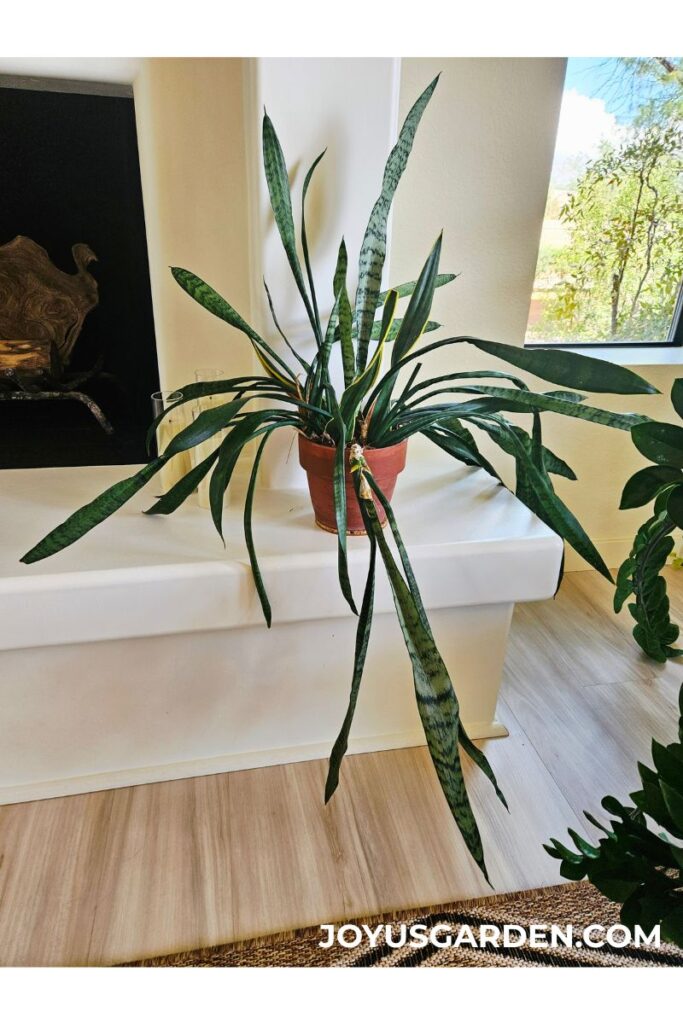
How To Propagate Snake Plants
Note: There are lots of different species and varieties of Snake Plants, and these propagation methods work for all of them. I wrote this post back when I lived in Santa Barbara, where I grew Snake Plants in my garden. Since moving to Tucson, I grow mine indoors—except for one in a pot on my covered patio.
When To Propagate Snake Plants
The best time of the year to propagate is in spring or summer, and even into early fall. You can propagate in winter, but since plants aren’t actively growing, it’s not ideal.
Light Exposure For Propagation
An exposure with bright indirect light works well, but avoid direct sun, because it’ll burn the leaves.
Materials Needed
Soil Mix: Snake Plants require a light, well-draining mix, so excess water flows through. This prevents the roots from sitting in water, which can lead to rot. I usually go with a succulent and cactus blend, but regular potting soil works too if you mix in something like pumice or perlite to improve drainage and keep the soil airy.
Pot: The material doesn’t seem to make a difference—I’ve successfully propagated Snake Plants in plastic, ceramic, and terracotta. What matters most is that the new pot has drainage holes so excess water can flow out.
The size depends on the method you’re using and how many divisions or leaf cuttings you’re planting. If you have one or two leaf cuttings, a small pot (4″) is fine. Since Snake Plants actually like to grow a little snug, choose a pot that fits without being overly roomy.
Cutting/Digging Tool: You’ll need a sharp knife, a pair of pruners, and/or a trowel, depending on the method you’re using. A sharp tool makes cleaner cuts, which helps the plant heal and root more easily. Here’s how to sharpen and clean your pruning tools.
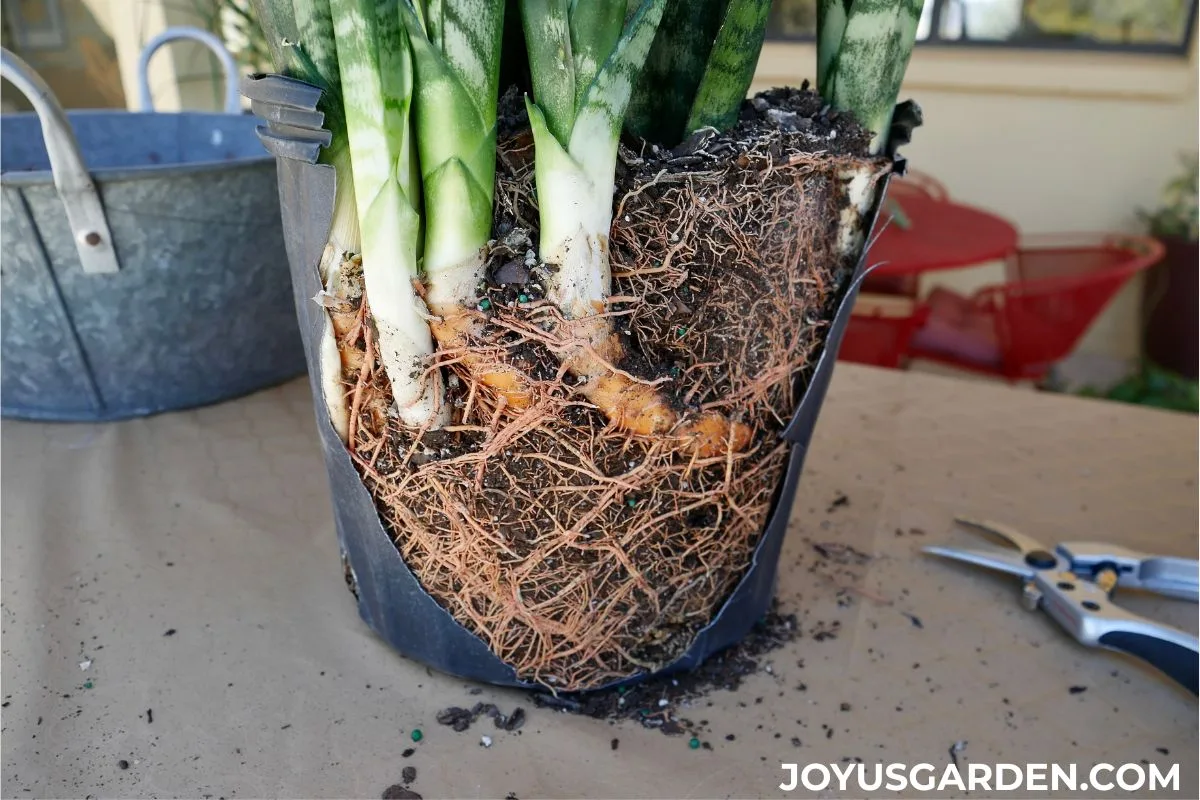
I was in the process of repotting this plant – the rhizomes are healthy!
After Care
Snake Plants are succulents, so less is more when it comes to water. Keep your cuttings or divisions lightly moist, but never wet, since soggy soil can quickly lead to rot. Check the soil with your finger; if the top inch or two feels dry, it’s time to give a little water.
It’s best to propagate indoors or on a covered porch where rain won’t drench them and cause the new roots to turn to mush. Be patient—Snake Plant cuttings can take several weeks (or even a few months) to root and show new growth, but it’s worth the wait!
If you’re a budding plant enthusiast, here’s a Snake Plant growing guide to reference once yours has rooted and is growing on its own.
The 3 Propagation Methods
By Division
Dividing a Snake Plant means turning one plant into two or more. Established roots can be tough, so I use a clean trowel, knife, pruners, or hand fork for the dividing process. If the plant is smaller and not too stubborn, you might even be able to pull it apart by hand.
The number of new plants you get depends on the size of the parent plant you’re dividing and how it naturally separates. Larger plants can be heavy with tightly packed roots, so dividing them can be a bit tricky. Remember, Snake Plants love to be a little potbound, so there’s no rush—take your time and let the plant tell you when it’s ready.
When dividing, using slightly snug pots helps new plants feel secure but not too cramped.
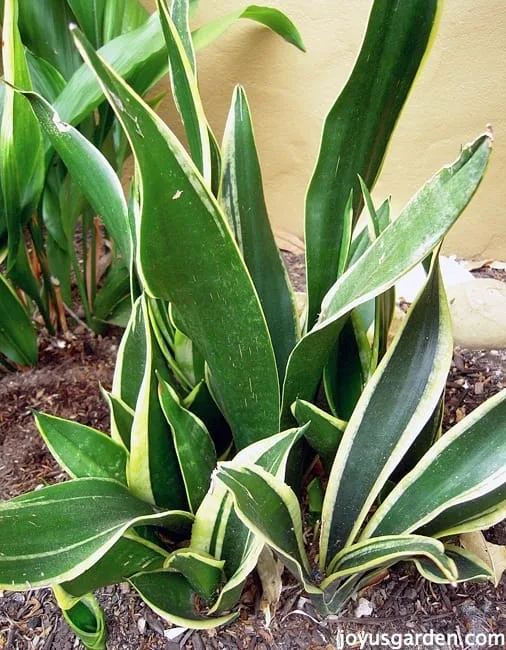
By Leaf Cuttings
This method takes longer than the other two, but it’s fun to try. It’s best done with more solid leaf color plants because any variation (especially on the margins) won’t carry over and will be lost..
If you’re ready to give it a go, start with a healthy leaf and a very clean, sharp knife. You can plant a whole leaf section, or cut it into smaller pieces to make several new plants. Either way, let the cuttings heal for a couple of days before planting. Be sure to place each section in the same direction it was growing—if you flip it upside down, it won’t root. Baby plants will eventually form off of each cutting.
I’ve put together a full post with step-by-step details on propagating Snake Plants by leaf cuttings if you want to dive deeper.
By The Rhizomes Which Spread
Rhizomes are
When I lived in Santa Barbara, I grew Snake Plants in the ground, and they spread readily this way. If you have a large plant indoors with new shoots (or “pups”) popping up along the sides, you can separate those rhizomes to grow more plants.
I cut rhizomes close to the parent plant, then let them dry and heal for 2–3 days before planting. Use a clean, sharp knife or pruners to make the cut. Sometimes the rhizome already has roots, and other times you’ll just see little bulges starting to form. You can propagate with plain rhizomes or with rhizomes that already have small plantlets attached. All ways have worked for me!
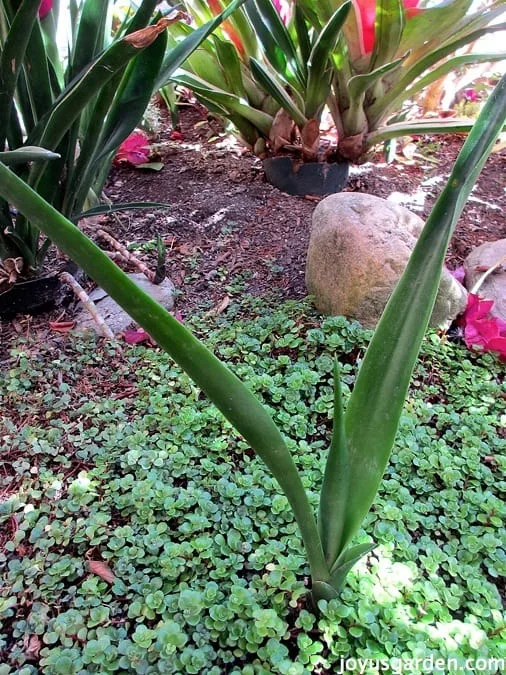
The single Sansevieria plant in the foreground is creeping through my garden. It’s attached to the mother plant in the back by that whiteish-grey”rhizome & there’s another smaller plant forming to the right.

In Water
I’m not including leaf water propagation as one of the three methods here since I haven’t tried it myself, and everything I share here on JoyUsGarden is from experience. That said, you’ll find plenty of tutorials online if you’re curious about giving it a go.
Personally, I’ve always had success propagating whole leaves in soil. If you do try the water method, keep an eye on the roots—transfer them to soil once they’re about ½ inch long. Leaving them in water too long can make the move into soil much harder for the plant.
Snake Plant Propagation FAQs
What’s the fastest way to propagate a Snake Plant?
By division, as the plant is already established. The easiest way is by leaf cuttings.
Why are my Snake Plant cuttings rotting instead of rooting?
Most often cuttings fail because they’ve been kept too wet or are in a soil that’s too dense. Snake Plant cuttings need a loose mix with proper drainage—like a succulent and cactus mix—to help prevent root rot.
Do Snake Plants need rooting hormone for propagation?
No. I’ve never used root hormone for any of my propagating, even with the leaf cutting method.
Will variegated Snake Plants keep their stripes when propagated?
No. A variegated leaf cutting will lose those side stripes. For instance, the popular Dracaena trifasciata “Laurentii” with its yellow side or edge stripes will revert to Dracaena trifasciata.
Can I propagate a Snake Plant leaf without a rhizome?
You sure can. Here’s a post and video explaining that propagation process.
How To Propagate Snake Plants Video Guide
Conclusion: No matter which method you try, having more Snake Plants is always a win-win. The best method comes down to personal preference and what works for you. Some plant lovers swear by division, others enjoy the patience and budget-friendly leaf cuttings process—it’s all part of the fun. However you choose to do it, each new addition makes your Snake Plant collection even more rewarding.
Happy gardening,





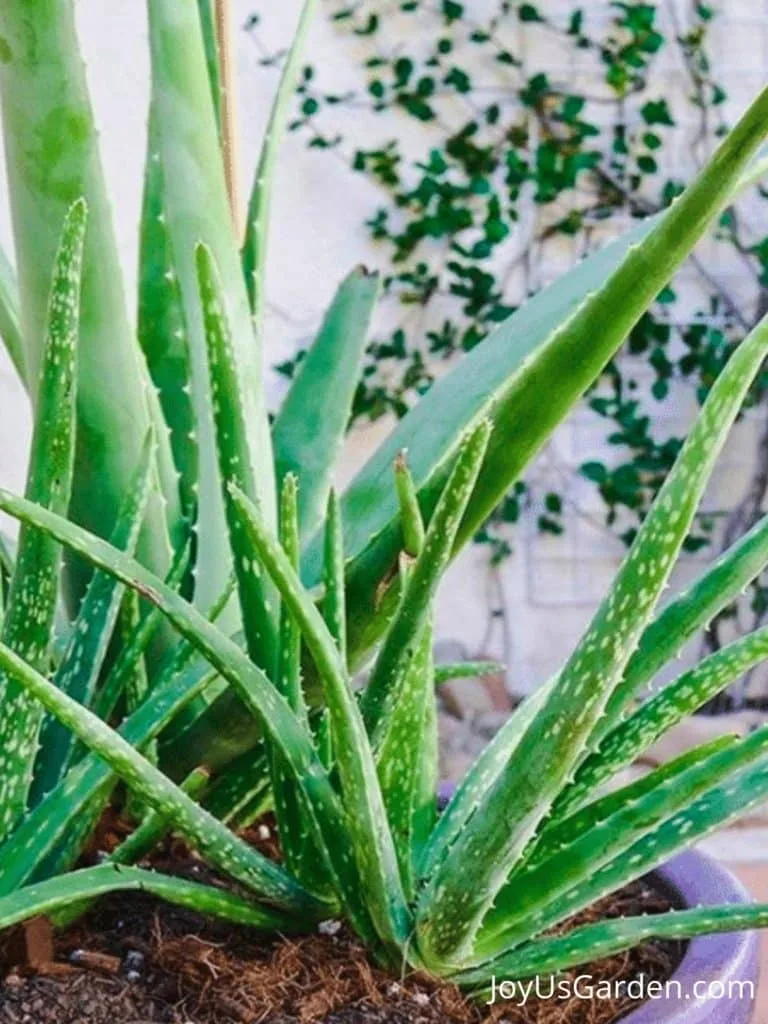
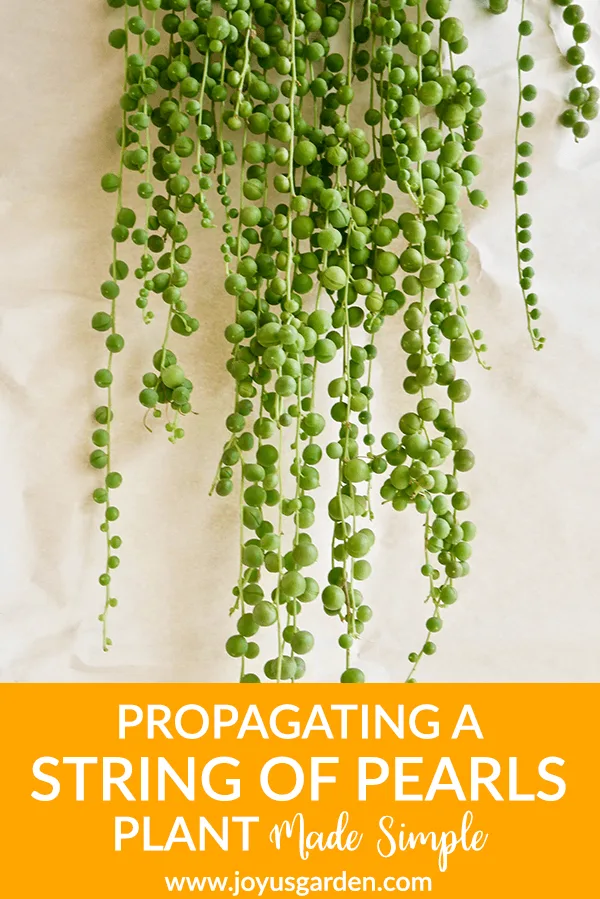
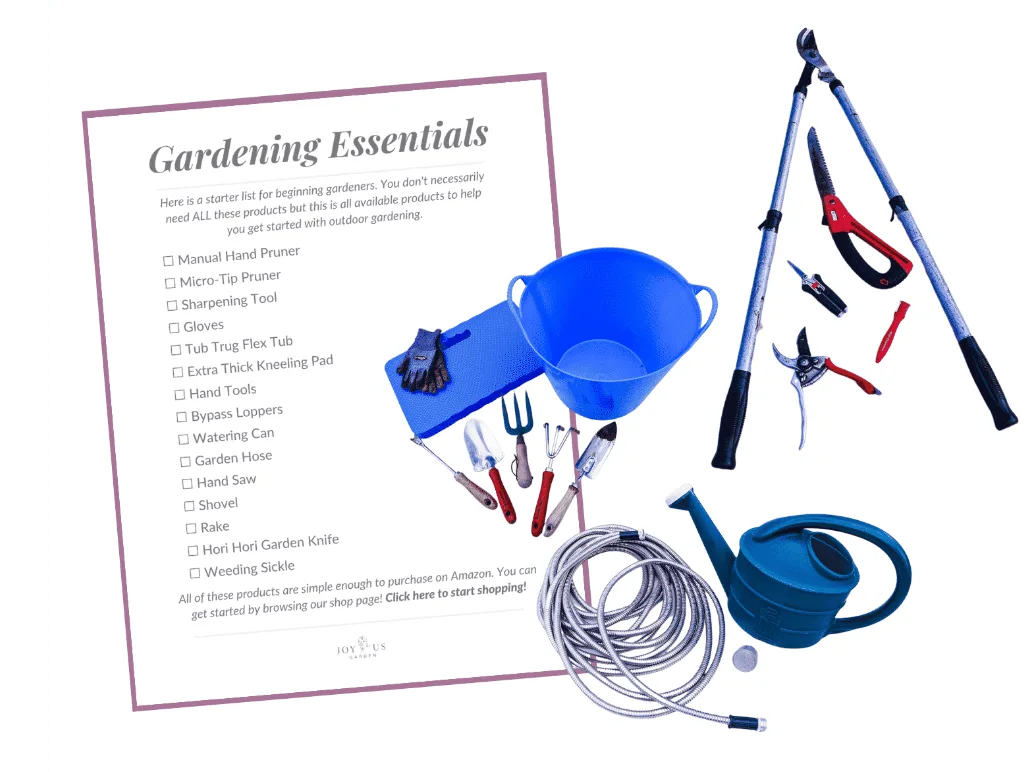
My Sansevieria blossomed and I planted the blossomes when they dried. I am getting seedlings. Has anyone tried this? If so, what were the results? I’m hoping for a new Sanseviera plant from seed.
I’ve never tried growing them from seed Peggy, but maybe someone has. From what I’ve heard, it’s a slow process. Nell
Pretty soon you run out of friends to give these cuttings to. People tend to hide when they see me coming, especially wioth a pot in my hand.
Too funny Dorlis! You’re right – even my UPS man is full up on succulent cuttings from my garden. Nell
Just about to buy some of those for our bedroom. Great video and the information clearly defines that you know your work. Thanks.
Thank you John. I recently moved to the Arizona desert & have 5 of them as houseplants. They don’t need any fussing & tolerate lower light just fine. Just be sure not to overwater them! Happy New Year, Nell
I found you because I evidently over watered, and it is winter. One clump of leaves fell over. So I was looking how to replant it. I will have to use the leaf cutting method. So this is new territory and I am excited to try it. I have three different sanseviera: one green, one stripped variegated and one stuckii. I hope I haven’t overwatered them all. .
Hi Suzanne – Sansevierias have thick roots which store a lot of water so they’re prone to over watering. In the winter you should always water your houseplants less because they’re resting. I recently moved to the Arizona desert & all my Snake Plants are loving it here! Nell
Great information. I just made some cuttings. Looking forward to see if they will give me some nice plants. I understand that those are very healthy for the house. We could all use that. Thanks Nell. 🙂
Thank you John! Yes, Snake Plants are champions when it comes to cleaning the air around them. I have several in my new home in the desert. So easy to care for in this warm, dry climate. Nell
Thanks much for this video! I just came home to my dark green variety totally fallen over out of its pot and I thought it was a goner! I will need to do the leaf cutting method to save it (I think it had a bit of root rot / was root bound). thanks!
You’re welcome Sarah! I’ve have 2 leaves fall off my S. laurentii (it needs to be repotted which I’m doing soon) within the past few months. The whole leaf roots too – & it’s easy to do. Nell
Hello! I bought my first snake plant about 6 months back. I have found that the original leaves haven’t gotten any taller but the couple shootings that came with it are skyrocketing and now almost twice as tall as the original leaves. So obviously I want to cut them back and I think I’ll try to place the cuttings into the same pot since there’s still plenty of space left. However I don’t want an eye sore of a level leaf instead of the cute points they get. Will points reform? Will the leaves I cut continue to grow after I cut them or will they now stay the same height like the original leaves that haven’t grown since I purchased the plant? Thank you!
Hi Stefanie – The cut part (on the top) will heal over & you’ll eventually see new shoots appear at the base. The cut part stays the same height. Nell
I’m having a little trouble with my snake plant. It is more than 15 years old, and it bloomed every year for me. I repotted early in 2016, separating and disposing of all but one stalk. Now that stalk is singular and it appears no others will sprout. It appears healthy enough. What to do to regain it’s fullness?
Hi Herb – Snake Plants do best when grow pot bound. It may have too much room. I’ve also found that they grow very slowly from a single stalk. Give it a little topdressing of compost & see if anything starts growing by the end of summer. Nell
Hi, I’ve had my mother in law’s tongue for a year now. Initially I overwatered them and most of the leaves have fallen off with rotten roots. I’ve cut them and chuck them in a vase with water. A few of them have grown roots but most of them haven’t grown any roots. The bottom tips are also quite brown. I’ve tried propagating them onto soil and all of them just slowly dried out and rot. Can someone please help. Thank you!
Rumpa x
Hi Rumpa – Snake Plants don’t like to be kept wet; they do best when kept on the dry side. I’ve never tried to propagate them in water (only be division or leaf cutting in a mix) but imagine it wouldn’t be successful. Sounds like you need to get a new plant – be careful not to over water it. Nell
I’m not sure I really understand the essential difference between the first two methods…. Essentially, you’re just dividing the roots up in both systems, aren’t you? So is it only different insofar as how close the plants are to each other?
Hi Francis – With the 1st method, the plant is growing in the ground & a single rhizome has spread which has sent up a single plant. I cut the rhizome apart from the mother plant & planted it. I wanted you to know that it can be propagated from a rhizome spreading & that it’ll grow into a full sized plant one day. The 2nd method is simply by dividing the plant in half or however many parts with a fork, trowel or shovel & transplanting it. Both are division but the methods are different. Nell
I had two pots of sansevieria plants that were grossly overcrowded – had not repotted in 10 years. Wanted to divide and share with others. I took them out of pots yesterday but was not able to repot them right away. I gathered all of them up and put them into a large bucket with water until I could pot them up.. Now I see this was not a good idea. What should I do with my plants until I can pot them up in two days?
Hi Mary – Sansevierias are extremely resilient. You can just leave them in the bucket without any water or wrapped in a towel or rag for a few days. Nell
Dear Nell. Please advise. I’m guessing the sansevierias I have growing inside in a pot are at least 100 YEARS OLD! They came from a very large window planter in the house of my mother-in-law, grew in my house for 45 years and moved with me. I got the big idea they needed a larger container- and this is where the trouble began. I may have planted them too deep and unfortunately they were placed in a bright, but this winter, very cold location. And duh, most certainly watered too much! They began turning yellow and falling out of the pot. Finally I read all your advice, “harvested” the healthy looking leaves and then I dug up as many rhizomes that I could. They are orange in color. Does that mean there’s no hope? I will start by trying to root leaf pieces. With the waiting period you recommend, could I also use rooting product? Without a doubt, these plants are the oldest things in my house. 🙁 Thank you so much. lynn
Hi Lynn – The roots of a sansevieria are usually orange; that’s normal. You can save them by planting the rhizomes or planting whats left of the healthy leaves. I don’t use rooting hormone & let the leaves heal over a few days. I’ve let them heal over for a longer period too. Stick them in succulent & cactus (not too deeply) & let them root. You may have to stake the leaves if they’re long. Nell
Hi,
Here in the UK I am absolutely in awe of the fact that these plants are grown outdoors in your country/countries. They would just never survive outside in our climate. However, I have very successfully grown a Mother-in-laws Tongue from a tiny leaf/shoot from a friends plant. I just broke the shoot off and planted it into soil.
It is now so huge and there are so many off shoots at the sides,that I am now ready to pot-on the tiny shoots and make more plants. My original plant is now about 4/5 years old.
Many good wishes for success with your own plants. Jena
Hi Jena – Yes, Snake Plants did well outside in Southern California. I now live in the Arizona desert where they do better indoors but still thrive none the less. Such tough, versatile plants! I’ve propagated them that way quite a few times also. Those taller leaves can get heavy & bend at the base. No worries, just cut them off & plant back in the pot! Nell
Hi I am trying to root my snake plant in alittle water or should I just put it in dirt not sure I am new at this new love for snake and plants in my home. Thanks.
Hi – I’ve never rooted a snake plant in water. What works the best for me is to let the leaf end heal over for at least a week & then plant it in mix. Sometimes I propagate them in a separate pot but often I put it back in the pot with the mother plant. Nell
Hello, do you know if I should put cinammon on the places where I cuted the rhizome on the snake plant and then let it heal?
And do you know if I should use root hormone on the snake plants, and if I should, do I put the root hormone when i just cut the rhizome and then let it heal over or let it heal over and then put the root hormone when i am going to plant it?
Thank you
Hi Eber – I’ve heard of cinnamon as a “home remedy” for purpose that but have never tried it. I don’t use rooting hormone – I just let it heal over. Nell
Variegation will not hold true if using leaf propagation. Only roots will keep the variegation
That’s true Andy. They do revert. Nell
Hi Nell, I absolutely love your site and how free and easy spirited you are when you teach us about plants. I bought a birds nest sansevieria about 4 months ago and it was doing great for awhile but I think I over watered it at some point and noticed it had root rot. I cut away all the roots and saved the good leaves and let them sit out for awhile and just potted them in soil according to your instructions today. Approximately how long do you think it will take for them to take root? Thanks for your help Nell.
Hi Mary – Thank you for your kind words! I’ve never timed that exactly, but roots should start appearing in 2-3 months. Spring is a great time for propagation. Nell